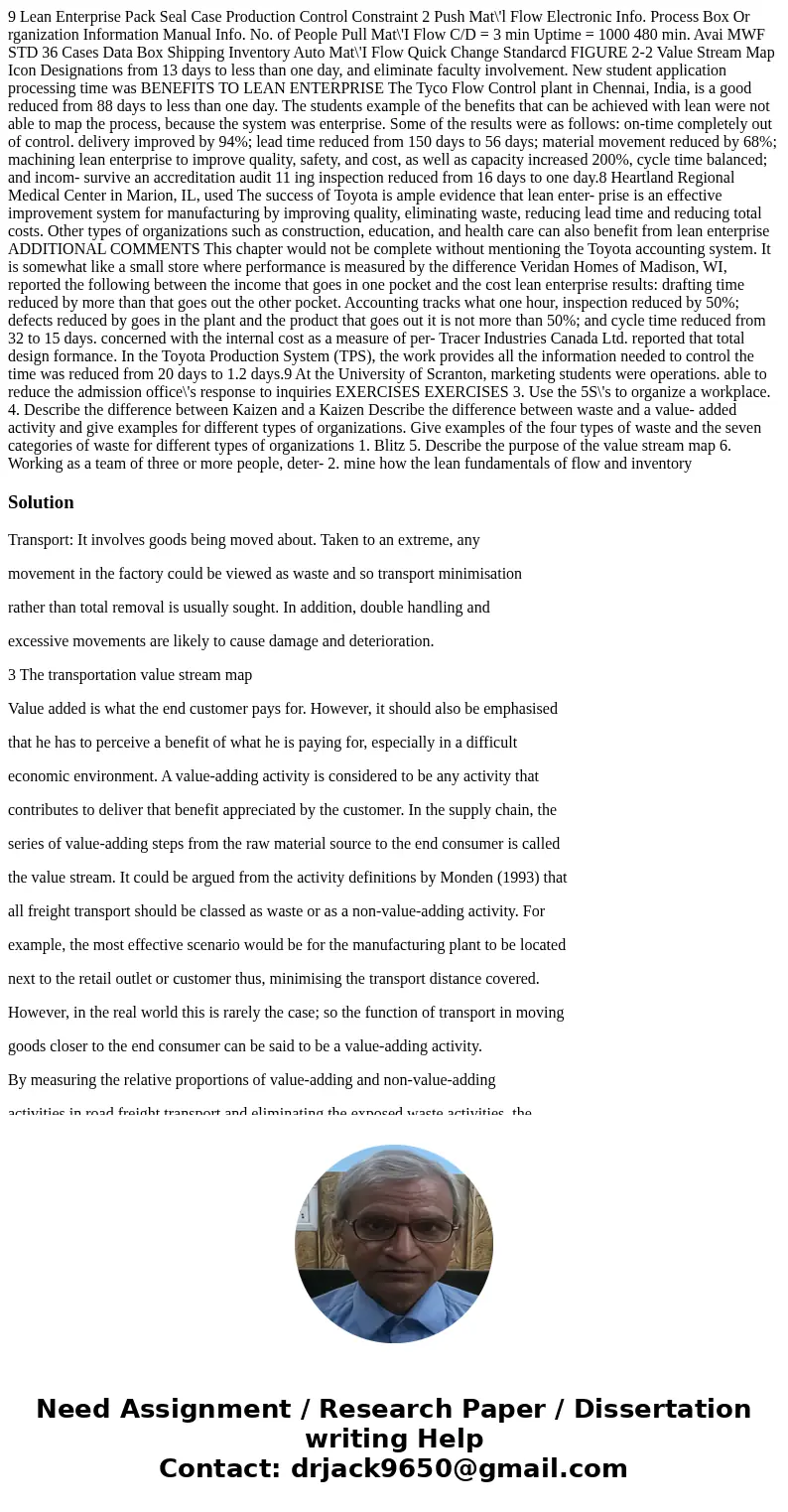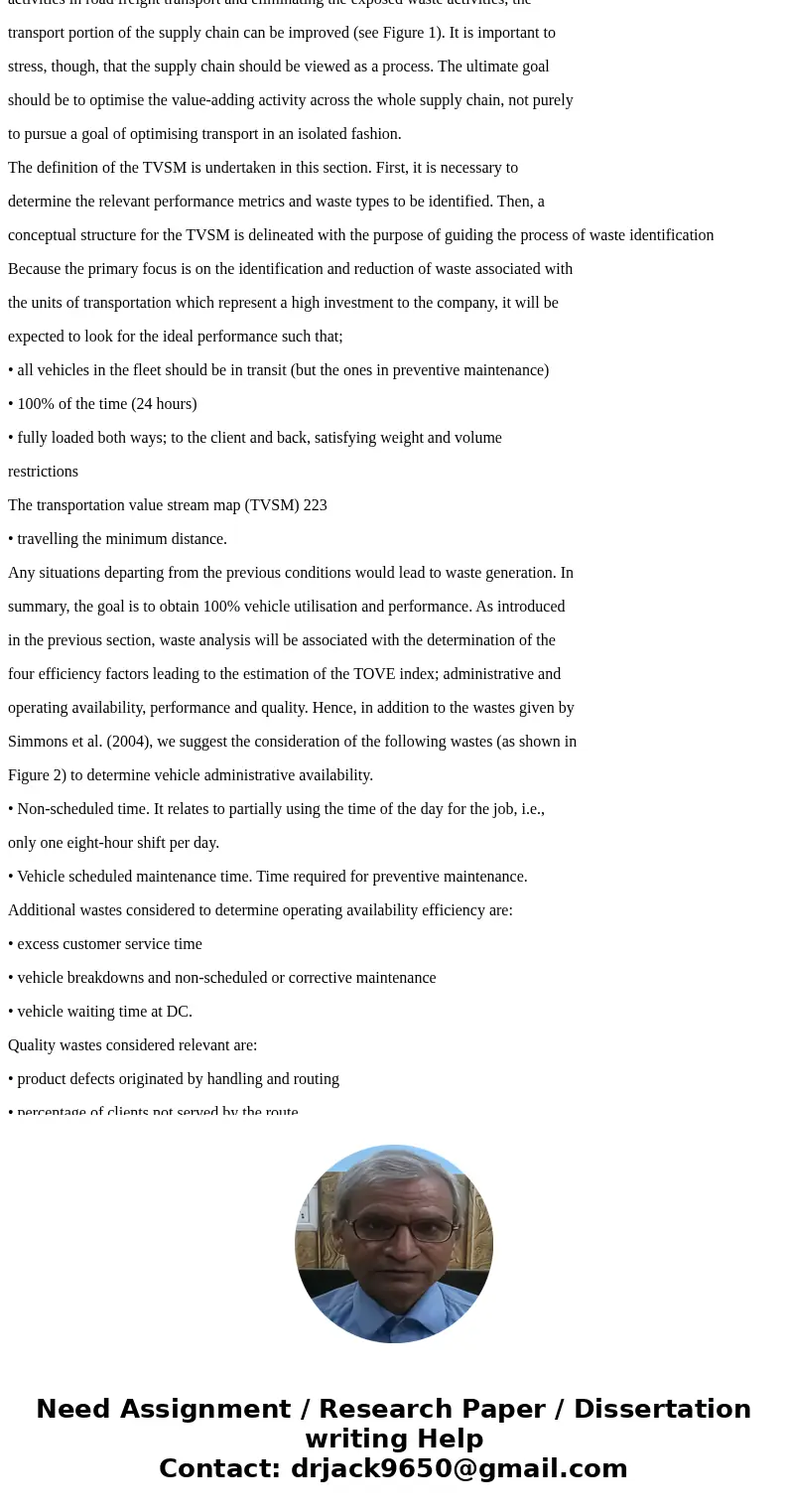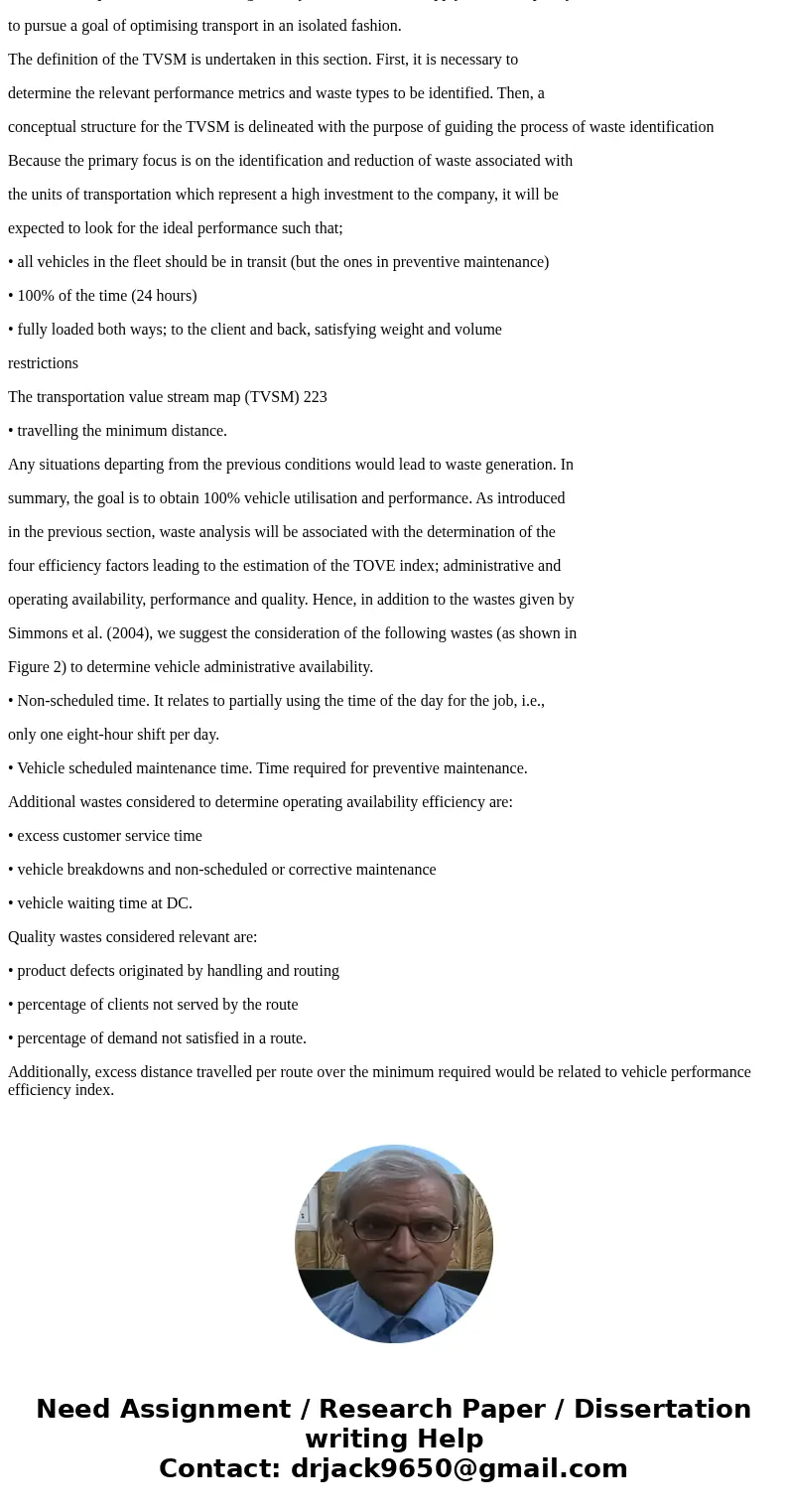9 Lean Enterprise Pack Seal Case Production Control Constrai
Solution
Transport: It involves goods being moved about. Taken to an extreme, any
movement in the factory could be viewed as waste and so transport minimisation
rather than total removal is usually sought. In addition, double handling and
excessive movements are likely to cause damage and deterioration.
3 The transportation value stream map
Value added is what the end customer pays for. However, it should also be emphasised
that he has to perceive a benefit of what he is paying for, especially in a difficult
economic environment. A value-adding activity is considered to be any activity that
contributes to deliver that benefit appreciated by the customer. In the supply chain, the
series of value-adding steps from the raw material source to the end consumer is called
the value stream. It could be argued from the activity definitions by Monden (1993) that
all freight transport should be classed as waste or as a non-value-adding activity. For
example, the most effective scenario would be for the manufacturing plant to be located
next to the retail outlet or customer thus, minimising the transport distance covered.
However, in the real world this is rarely the case; so the function of transport in moving
goods closer to the end consumer can be said to be a value-adding activity.
By measuring the relative proportions of value-adding and non-value-adding
activities in road freight transport and eliminating the exposed waste activities, the
transport portion of the supply chain can be improved (see Figure 1). It is important to
stress, though, that the supply chain should be viewed as a process. The ultimate goal
should be to optimise the value-adding activity across the whole supply chain, not purely
to pursue a goal of optimising transport in an isolated fashion.
The definition of the TVSM is undertaken in this section. First, it is necessary to
determine the relevant performance metrics and waste types to be identified. Then, a
conceptual structure for the TVSM is delineated with the purpose of guiding the process of waste identification
Because the primary focus is on the identification and reduction of waste associated with
the units of transportation which represent a high investment to the company, it will be
expected to look for the ideal performance such that;
• all vehicles in the fleet should be in transit (but the ones in preventive maintenance)
• 100% of the time (24 hours)
• fully loaded both ways; to the client and back, satisfying weight and volume
restrictions
The transportation value stream map (TVSM) 223
• travelling the minimum distance.
Any situations departing from the previous conditions would lead to waste generation. In
summary, the goal is to obtain 100% vehicle utilisation and performance. As introduced
in the previous section, waste analysis will be associated with the determination of the
four efficiency factors leading to the estimation of the TOVE index; administrative and
operating availability, performance and quality. Hence, in addition to the wastes given by
Simmons et al. (2004), we suggest the consideration of the following wastes (as shown in
Figure 2) to determine vehicle administrative availability.
• Non-scheduled time. It relates to partially using the time of the day for the job, i.e.,
only one eight-hour shift per day.
• Vehicle scheduled maintenance time. Time required for preventive maintenance.
Additional wastes considered to determine operating availability efficiency are:
• excess customer service time
• vehicle breakdowns and non-scheduled or corrective maintenance
• vehicle waiting time at DC.
Quality wastes considered relevant are:
• product defects originated by handling and routing
• percentage of clients not served by the route
• percentage of demand not satisfied in a route.
Additionally, excess distance travelled per route over the minimum required would be related to vehicle performance efficiency index.



 Homework Sourse
Homework Sourse